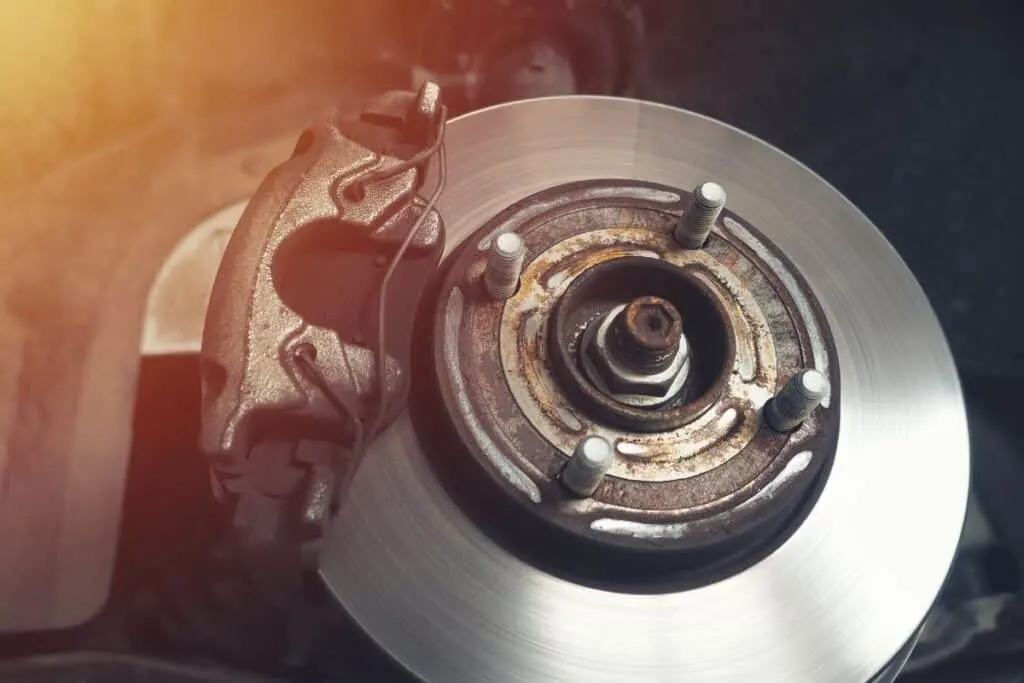Tesla is a brand synonymous with innovation. It is a leader in clean energy solutions and at the forefront of the electric vehicle revolution. So what makes a Tesla car unique?
It is a vehicle that distinguishes itself through high-powered battery cars, sleek designs, a sturdy build, and top-notch rollover prevention technology. When it comes to the modern car, Tesla is a trailblazer in many respects.
So, where does Tesla rank when it comes to car brakes?
The brand is no different with brakes, with another top-of-the-line offering that once again breaks (no pun intended) the mold. Tesla regenerative braking is a game-changer with many benefits for drivers!
What Kind of Brakes Does Tesla Use?
Just as Tesla is an innovator in most aspects of its technology, the same can is true for its electronic braking system.
Tesla uses top-of-the-line electric power assist and regenerative braking technology. The latest Tesla models incorporate electric disc brakes designed by Italian manufacturer Brembo.
How Do Tesla Brakes Work?
The actual braking function on Tesla vehicles is reasonably standard and comparable to many modern cars currently on the market.
A disc brake is attached to the wheel of the car. When the braking system is engaged, the brake pads squeeze against the disc creating friction. The friction reduces the rotation of the axle, causing a reduction in speed or forcing a stop altogether.
If this sounds familiar, it’s because it is relatively basic braking technology. Tesla uses a similar concept, although there are several distinct refinements.
Tesla brakes maintain several advantages over other standard braking options, including:
- Superior engineering
- High-quality materials
- Durable brake pads
These features contribute to a functioning and highly efficient braking system. It keeps drivers safe and makes for smooth riding. While quality is at the forefront of all Tesla’s product offerings, it is not the only differentiating factor.
New Tesla models use electric actuators rather than hydraulic. This has several benefits and contributes to overall braking efficiency and durability.
Another factor that sets Tesla apart is its regenerative braking technology.

What Is Regenerative Braking?
Regenerative braking is a crucial component of Tesla vehicles. They contribute to overall safety, as well as increasing efficiency and function.
Regenerative refers to the process of converting and regenerating energy every time the braking system gets used.
Ultimately, regenerative braking is an energy recovery component that keeps the vehicle operating longer.
How Does Regerative Braking Work?
As explained above, when you step on the brake pedal, this causes brake pads and discs to meet, which slows the vehicle down. In a standard vehicle, braking creates momentary kinetic energy that turns to heat before fading entirely.
Most of the time, this energy is wasted and goes unnoticed.
Regenerative brakes capture kinetic energy during the braking process and convert it into chemical energy that is stored in the car’s battery. In effect, the braking system creates its own electricity as energy flows from the wheels back to the battery.
In this sense, it is “regenerative” because the energy from the braking is recaptured by the battery and goes back towards recharging the vehicle. Regenerative braking provides a self-sustaining energy cycle that keeps the car running longer.
How Much Energy Does It Generate?
Electricity is generated based on the frequency and duration of the regenerative brake force applied. This means the more braking you do, and the longer you do it for, the more electric energy you will generate!
The highest energy rates are generated when drivers slowly apply the braking function well in advance of when you need to stop. The longer you stay engaged with the brakes, the more energy you generate.
Slamming the brakes at the last second isn’t only unsafe; in the case of regenerative braking function, it is also less energy inefficient.
Tesla continues to make advancements with each new release. It is estimated that current regenerative systems can recover up to 70% of the kinetic energy used during the braking process.
Advantages to Regenerative Braking
There are several advantages to regenerative braking. Some of these include:
1. Longer Driving Intervals
As kinetic energy is restored and converted to the car battery, the vehicle is able to keep going.
This can ultimately yield hundreds of extra miles a year for car owners without needing to either refuel their cars (if you own a hybrid) or plug it in (if you own a fully electric vehicle).
Drivers with regenerative brakes can save time and money simply by using their brake system.
2. Multi-functional
In the case of Tesla, regenerative braking power is generated whenever you apply the brakes. Often regenerative brakes are ideal for commuters who frequently find themselves on the go, in traffic, or at stoplights. Every time you stop, you save a little more energy.
The regenerative function saves the most energy when going downhill but is also efficient for city driving or running errands. Highway driving that doesn’t require much stopping is unlikely to save much energy.
Regenerative brakes can also be incredibly efficient if applied on a larger scale. Regenerative systems are beneficial for public transportation (frequent stops) or certain industries such as waste collection or parks maintenance.
With some regenerative braking systems, you can save up to 30% of all energy spent. Over the long run, this can add up.
3. Reduced Wear and Tear for Brakes
Regenerative braking systems include an electric drive train which contributes to greater braking efficiency. Compared with traditional friction brakes, regenerative systems involve much less wear and tear, which culminate in costly maintenance fees.
The reason for this is that regenerative braking puts much less strain on your brake pads than traditional brakes too.
Disadvantages of Regenerative Braking
While Regenerative braking has plenty of benefits, it is not without drawbacks. Some negative aspects include:
1. Less Effective at Prolonged Slower Speeds
Yes, it is ideal for commuters but maybe not all commuters. If you are stuck in slow-moving traffic every day for prolonged periods, you will likely generate less energy.
When you are barely moving, there is a limited application of brake force. If braking is minimal, it is not likely to generate very much energy. If you find yourself frequently stuck sitting in traffic, you might see a lesser degree of energy restoration.
Reduced effectiveness can make the tangible benefits of regenerative braking more diminished. In this regard, the advantages are more of a sliding scale and may not be the same for everyone.
2. Different feel
Regenerative brakes might feel strange to some drivers who are used to more traditional brake systems. The brake pedal and reaction times might feel off. The brakes might even feel unresponsive.
Stopping power may not be as strong, requiring drivers to put more pressure than they are used to on the brakes. This can cause concern for drivers as well as a lack of confidence. For drivers that like the familiar, there will be a bit of an adjustment period.
How to Turn on Regenerative Braking on a Tesla
Tesla vehicles come equipped with an in-car infotainment system to help drivers navigate different settings and options.
For Tesla, regenerative braking is a default setting. In older models, users were given two options to consider: “Standard” or “Low.” Drivers could control the strength of the regenerative braking system and mitigate some effects.
Newer models come equipped with standard regenerative settings. You do not need to manually activate any regenerative braking settings as they are set automatically.
How Long Do Tesla Brakes Last?
Tesla brakes are notoriously durable and last a long time, but exact lengths depend on many variables, including usage rates, driving styles, climate, and general wear and tear.
In general, those living in colder weather climates or that frequently drive on rougher terrains may require more maintenance on their brakes.
Many drivers have reported driving up to 100,000-150,000 miles before needing to replace their brake pads which is substantially longer than the average for most standard brake pads. Some drivers have even reported going over 250,000 miles or never needing replacements at all. On many standard vehicles, brake pads only last around 50,000 miles.
One reason for the increased brake life is the exceptional quality of Tesla regenerative braking pads.
Another contributing factor is that regenerative braking puts a lot less strain on the brake pads, protecting them from wear and tear. Regenerative brakes perform exceptionally well when going downhill.

How Often Do Tesla Brakes Need to Be Serviced?
Recommendations for servicing vary slightly depending on the model. According to their official site, Tesla recommends routine maintenance and brake fluid checks every 1-2 years, depending on the climate you live in.
If you live in a cold-weather climate, you should clean and lubricate brake calipers every 12 months, whereas, for warmer weather climates, you can go a bit longer. You should get a brake fluid health check every two years.
Frequently Asked Questions (FAQs)
Do brake lights come on during regenerative braking?
Yes, brake lights are automatically activated in Tesla regenerative braking systems whenever the brake is engaged and deceleration reaches a specific rate. The alert system helps drivers verify that regenerative braking is on and working.
Can I adjust regenerative braking settings?
As of October 2020, Tesla has removed the option to adjust regenerative brake settings due to a software update. There is only one standard regenerative braking option.
Are Tesla brakes hydraulic?
Some older Tesla models use hydraulic brakes; however, recent vehicles come equipped with Brembo electric disc brakes. These brakes use electric actuators rather than hydraulic fluid pressure.
Is driving a Tesla difficult?
Like any new car, driving a Tesla may take some getting used to but ultimately is very similar to driving any standard vehicle. Tesla regenerative brakes have a distinctly different feel from most standard brakes, but the adjustment time generally isn’t too lengthy.
How does emergency braking work?
All newer Tesla models come equipped with an automatic and emergency braking function. Automatic braking is designed to work at speeds of up to 90 mph to prevent or reduce the severity of an accident. They can be manually disabled via the control setting on the infotainment screen.
Tesla Regenerative Braking
Regenerative braking is now a core feature of newer Tesla models proving its functionality, durability, and safety capabilities. The benefit of regenerative braking is evident as Tesla continues to prove its innovative skills.
While regenerative braking isn’t exclusive to their vehicles, the Tesla regenerative braking system ranks among the best on the market. The combination of superior engineering and exceptional equality makes for a great driving experience that maximizes energy efficiency.
